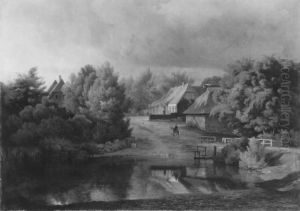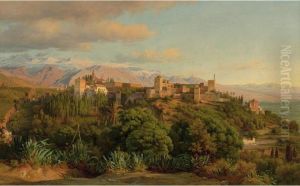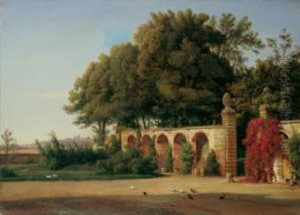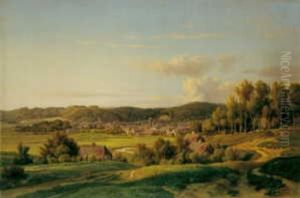Ludwig H. Theodor Gurlitt Paintings
Ludwig Hermann Theodor Gurlitt, commonly known as Ludwig Gurlitt, was a notable figure in the arts, though not primarily as an artist himself but rather as an art historian and a member of the Gurlitt family, which included several distinguished musicians, scholars, and art dealers. Born on March 8, 1855, in Nischwitz, Thallwitz, Gurlitt was part of a lineage that would become significant in the world of art history and music.
Gurlitt's contributions to art history were largely through his scholarly work. He studied at the University of Leipzig and the University of Strasbourg. His academic career was focused on the history and theory of art, and he became known for his writings on these subjects. His legacy is somewhat overshadowed by the activities of other family members, most notably his nephew Hildebrand Gurlitt, who was an art historian and dealer associated with the Nazi regime, and Hildebrand's son, Cornelius Gurlitt, who gained international attention when his possession of a vast collection of art, some of which was looted during World War II, was discovered in 2012.
Ludwig Gurlitt's life was relatively short; he died on September 27, 1897, at the age of 42. Despite his early death, his contributions to the field of art history, although less well-known than those of his relatives, were significant in their own right. His work helped lay the foundations for later developments in the understanding and appreciation of art. The Gurlitt name remains a complex one in the history of art, with Ludwig's legacy being a part of a broader narrative that encompasses both scholarly pursuit and the darker aspects of art acquisition during times of conflict.








